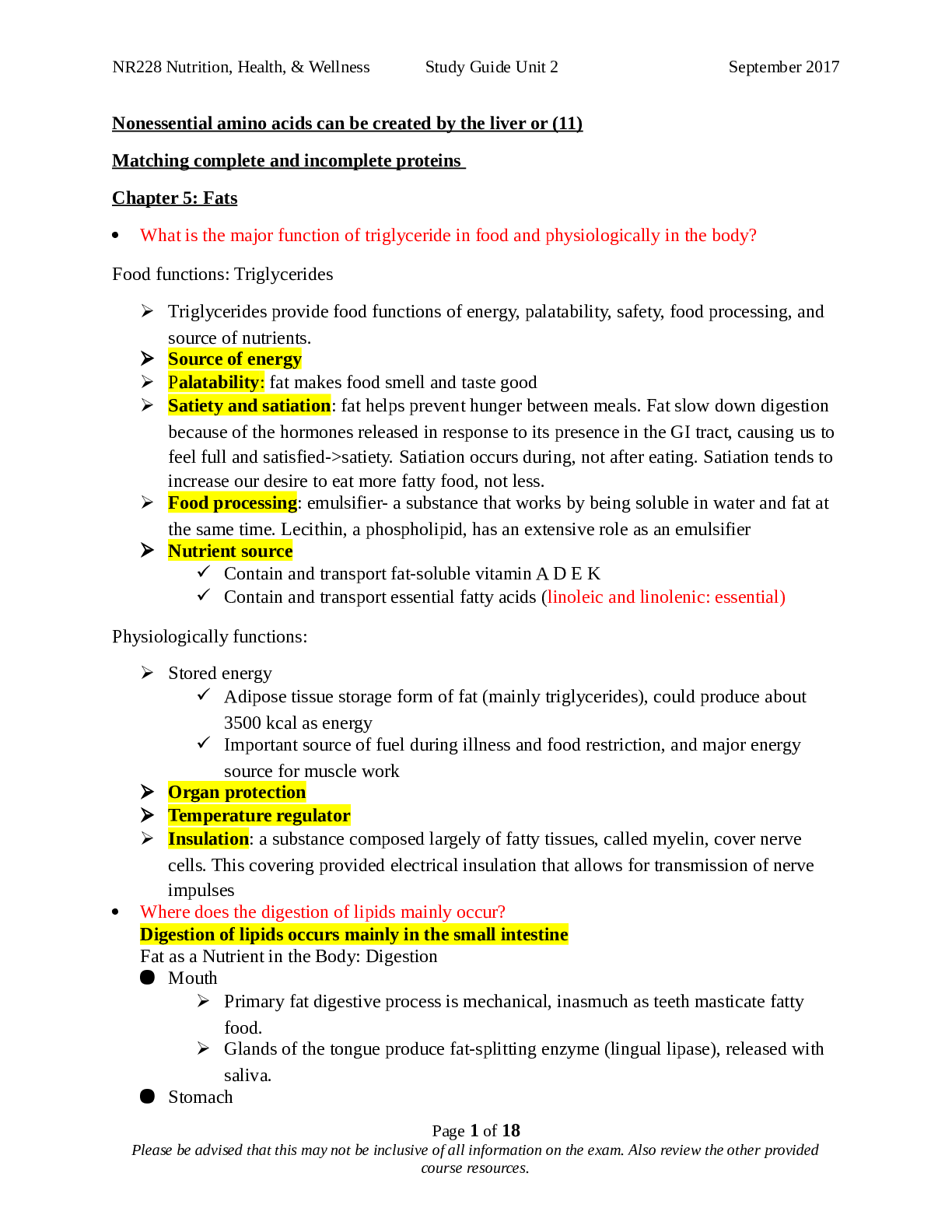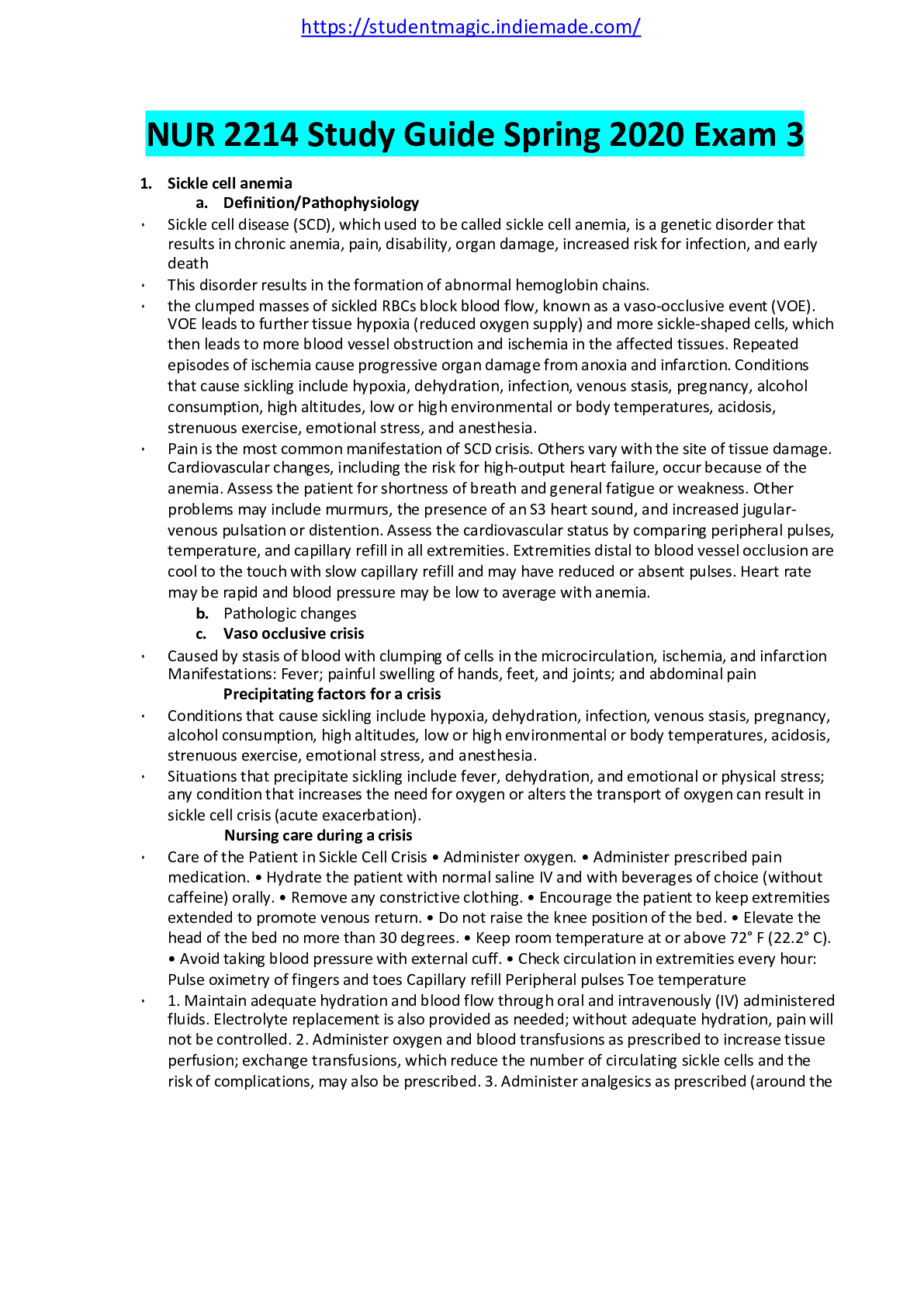Research Methods > STUDY GUIDE > RESEARCH METHODS EXAM QUESTIONS, ANSWERS & MARKS (All)
RESEARCH METHODS EXAM QUESTIONS, ANSWERS & MARKS
Document Content and Description Below
RESEARCH METHODS EXAM QUESTIONS, ANSWERS & MARKS What is an experiment? ANS: An experiment is a research technique in which an IV is manipulated / and the effects of this on a DV are observed and me... asured. / Other (extraneous) variables are held constant. / A true experiment is one in which the IV is directly under the experimenter's control (as in laboratory or field experiments). / In natural and quasi-experiments the IV varies on its own and some would argue that, because of this, they are not really experiments. (5 marks) Identify one difference between an experiment and a correlation ANS: The main difference between an experiment and a correlation is that experiments enable us to talk about 'cause and effect' / whereas correlations simply describe patterns of linear relationship between pairs of data / and do not allow us to make cause and effect statements. / In addition, an experiment is a research method / but correlation is a technique of data analysis applied to data gathered by some other means. (5 marks) What is an independent variable (IV)? ANS: An IV is the influencing factor / which a researcher manipulates in an experiment / in order to observe its effect on a DV / for example, in a study of the effect of alcohol on driving ability, the IV would be the amount of alcohol given to the drivers. (4 marks) What is a dependent variable (DV)? ANS: A DV is the factor in an experiment which is influenced by changes in the IV / and which is observed and measured by the researcher. / In the example given in 3, the DV would be driving ability. (3 marks) What is a confounding variable? ANS: A confounding variable is an influence in an experiment that is not the IV yet causes changes in the DV. / For example, researchers may find age affects IQ in that older people do less well than younger people. / However, this could be due to the confounding variable of how the test is approached. Older people may be more careful and less concerned about 'beating the clock' than are younger people, consequently, their scores are lower. (3 marks) What is an extraneous variable? ANS: Extraneous variables are all other variables apart from the IV and DV that need to be controlled in an experiment / e.g. the testing environment, time of day, instructions to participants. / If extraneous variables are not taken care of they could obscure the effect of the IV / or, if systematic, turn into a confounding variable. (4 marks) What is a control group? ANS: In a simple two-sample experiment, control group participants are affected by everything the experimental group experiences with the exception of the IV. / Scores from the control group thus provide baseline data / against which scores from the experimental group can be compared. (3 marks) Distinguish between independent groups, matched pairs and repeated measures designs ANS: These are experimental designs / used to control variation due to individual differences between participants. / In a simple experiment comparing two conditions, the independent groups design consists of two different groups of participants / who have been allocated by chance to either of the two conditions. / Matched pairs designs involve pairing participants on variables relevant to the study / then splitting the pairs and randomly allocating the members of the pair to one or other condition. / In a repeated measures design, participants undergo both conditions in the experiment. (7 marks) What are practice effects? ANS: Practice effects occur in repeated measures designs / when participants carry over an improvement to the second experimental condition / as a result of having done the first condition. / (In this case, practice becomes a confounding variable.) (4 marks) What are order effects? ANS: Order effects occur in repeated measures designs / when participants' performance in the second condition is affected by them having done the first. / This could include improvements, as in practice effects, / but it also includes the detrimental effects of fatigue or boredom. (4 marks) What is counterbalancing? ANS: Counterbalancing is routinely built into repeated measures designs / as a precaution against order or practice effects. / Half the participants do condition A first followed by B, and half do B first followed by A, / hence the term ABBA design. (4 marks) What is randomisation? ANS: Randomisation can refer to the random allocation of participants to conditions to help control for variation due to participants. / Secondly, it can refer to randomising the order in which participants take part in conditions (thus achieving a similar effect to counterbalancing). / Thirdly, it can refer to randomising the order of stimulus materials for each participant e.g. a word list in a memory experiment might be given on a different order to each participant. (3 marks) Write out a hypothesis for a study comparing imagery and repetition as aids to memory: ANS: The population / mean for imagery scores is higher than the / population / mean for repetition scores. (4 marks) Provide a null hypothesis to go with it ANS: The difference between the / population / means for imagery and repetition is zero. (3 marks) What is a directional hypothesis and when would it be used? ANS: A directional hypothesis predicts the direction in which results will fall / e.g. the population mean of sample A is higher than the mean of sample B / or the correlation between C and D is positive. / Such hypotheses are used only when we have good reason to predict the direction of the results / e.g. when previous research or careful reasoning suggest it. (5 marks) What is a non-directional hypothesis and when would it be used? ANS: A non-directional hypothesis does not predict the direction in which results will fall / e.g. the population means of sample A and sample B differ / or there is a correlation between C and D. / Such hypotheses may be used when there is no prior reason to suppose that the results will turn out a particular way. (4 marks) When would a one-tailed test be applied? ANS: A one-tailed test is used with a directional hypothesis. (1 mark) When would a two-tailed test be applied? ANS: A two-tailed test is used with a non-directional hypothesis. (1 mark) What is meant by 'operationalising' variables? Suggest two ways in which aggression could be operationalised ANS: Operationalisation means precisely defining a variable / so that it can be measured. / Aggression could be operationalised as the number if incidences of verbal abuse per hour. / Alternatively, aggression could be measured as the number of incidences of physical violence per hour. (4 marks) What are demand characteristics? ANS: These are aspects of the research situation / that could alert the participants to the hypothesis being tested. / Participants may then alter their behaviour in accordance to the perceived demands of the situation. (3 marks) What are experimenter effects? ANS: Experimenter effects are influences (usually unwittingly) brought into the research situation by the experimenter / which can interfere with the study. / They include the effects of the experimenter's appearance or behaviour on the participants / but, most importantly, they include 'experimenter expectancy effects'. / These occur when the experimenter somehow sways the results in the expected direction. (5 marks) What is meant by participant reactivity (subject effects)? ANS: Participant reactivity refers to the possibility that participants' behaviour can be affected the research situation / so that they feel unable to react naturally. / They may, for example, try to support or undermine the research. / Alternatively they may be 'evaluatively apprehensive i.e. concerned about making a favourable impression. (4 marks) What is a single blind procedure and why is it used? ANS: The single blind procedure is when the participants are not informed of the research hypothesis. / It is used when it is felt that their knowledge of the hypothesis would adversely affect the results or make a nonsense of the research procedure. / It helps to minimise participant reactivity. (3 marks) What is a double blind procedure and why is it used? ANS: The double blind procedure is when neither the participants nor the researcher gathering the data know the research hypothesis. / The researcher is simply acting on instructions from another researcher. / This is to minimise both experimenter effects and participant reactivity. (3 marks) What is meant by a population in psychological research? ANS: A population is often thought of as the total number of individuals that would qualify to take part in a research study / because they have the necessary characteristics / but when researchers talk about populations, they are really referring to populations of data. (3 marks) What is meant by a sample in psychological research? ANS: A sample is a set of data selected from a population for the purposes of a research study. (1 mark) Give two reasons for sampling ANS: Sampling is carried out in order to ensure that the sample adequately represents the parent population / so that findings from the sample can be generalised back to the population from which it was drawn. (2 marks) How might you take a random sample? ANS: In a random sample, each person in the population must have an equal chance of being selected. / One way to achieve this is to assign members of the population with a number / and then select the required number by picking out their numbers at random, / usually by using random number tables or generators. (4 marks) What factors determine sample size? ANS: The ideal sample size is that which adequately represents the parent population. / A relatively larger sample would be needed to represent a very varied population / and a relatively smaller one to represent a very homogenous population. / For these reasons it is not sufficient to say an adequate sample size is, say, 10% of the population. / Sample size can also be related to the concept of power. / An adequate sample is one that allows you sufficient power to correctly reject a false null hypothesis. (6 marks) Define opportunity and quota sampling ANS: Opportunity sampling is when the researcher takes the first people encountered who fit the necessary criteria. / Quota sampling is like a more elaborate form of opportunity sampling and is often used by market researchers. / They decide on a number of categories of individual that they'd like to study, / decide how many to find from each category / and then go and opportunity sample them. (5 marks) What is meant by reliability? ANS: Another word for this is consistency. / It usually means that a test or research study can be depended upon to produce the same, or similar, results every time it is carried out. (2 marks) Define inter-observer reliability, test-retest reliability and alternate forms reliability ANS: Inter-observer reliability is evident when different observers record the same event in the same way as each other. / Test-retest reliability is when a test produces similar results on two or more occasions. / Alternate forms reliability is shown when two equivalent versions of the same test produce similar results. (3 marks) What is meant by validity? ANS: Another word for validity is relevance or appropriateness. / A clumsier way of putting it is to say that a measure is valid if it measures what it purports to measure. (2 marks) What is experimental validity? ANS: Experimental validity refers to the internal 'worth' of the research design / i.e. is it really measuring what it is supposed to measure / or are there biases or other design problems getting in the way? (3 marks) What is ecological validity? ANS: Findings from a research study have ecological validity if they are generalisable across different settings / (contextual validity). (2 marks) Define face, predictive and content validity ANS: Face validity means that a measure appears, on the surface of it, to measure what it purports to measure. / Predictive validity means that a measure is a good forecast of some future measure of performance. / Content validity means that a test contains items that are appropriate for testing whatever it purports to test. (3 marks) In what two senses is the term standardisation used? ANS: Standardisation can refer to ensuring that conditions in a research setting are the same for all participants / (except for any variable manipulation). / It is also used in the field of testing / to refer to the process by which a test is adjusted until scores on it yield a normal distribution. (4 marks) What are standardised instructions? ANS: Standardised instructions are directions that are given to research participants in the same way. / It is a form of control used in order to avoid favouring some participants over others. (2 marks) What is a pilot study? What is the purpose of pilot studies? ANS: A pilot study is a small-scale / dummyrun of a proposed research procedure. / Its purpose is to show up any deficiencies in the procedure / so that they can be put right, and the procedure perfected, / before the full-scale study is carried out. (5 marks) What is a) a cross-sectional and b) a longitudinal research design? ANS: A cross-sectional research design involves selecting a number of different age groups of participants / and studying them at the same time. / A longitudinal research design usually means selecting one group of participants all within the same age range / and following them up at intervals over time. / Both research designs are aimed at discovering the nature of change with time. (5 marks) Distinguish between naturalistic and controlled observation ANS: Naturalistic observation is carried out on participants in an environment which is familiar to them / for example a child's home, school-room or playground. / In controlled observation, the psychologist exercises some control over events which influence the participants / e.g. some aspect of their normal, everyday environment is changed / in order to observe the effect. (5 marks) What is the key purpose of a case study? ANS: Case studies are concerned with in-depth understanding / of one unique instance of something / rather than trying to find general principles which apply to groups of people. (3 marks) Identify one problem with case studies and explain how it can be countered. What is a survey? Give an example: One from the following (2 marks): ANS: * They can be said to be open to researcher bias / but no more so than any other interpretative method. * Some case-studies depend on unreliable retrospective data / but other people who know the case in question and who could confirm what had been recalled. * Material collected can be applied to the case itself but not to people in general. / This is not an immediate problem for psychologists trying to help individuals. Identify two problems with the survey technique ANS: A survey is usually a large-scale study / designed to gather information from large numbers of people. An example is the Hite report (or any other suitable example). (3 marks) Two key problems with surveys are response bias / and sampling difficulties. (2 marks) Sketch a normal distribution and give three adjectives to describe it. (Make sure you label the axes.) ANS: An appropriately shaped curve drawn on axes labelled frequency (vertical) and scores (horizontal). (3 marks) Appropriate adjectives such as unimodal, bell shaped and symmetrical (3 marks). (Total 6 marks) Sketch three other shapes of frequency distribution and name each one: ANS: Sketches of any three from the following correctly named earn 2 marks each: positively skewed, negatively skewed, U-shaped, J-shaped, bi-modal, rectangular. (Total 6 marks) Name four levels of measurement ANS: The four levels of measurement are nominal, ordinal, interval and ratio. (4 marks) What are measures of central tendency used for? ANS: Measures of central tendency are used for summarising large amounts of data / into one typical, or average value. (2 marks) Name and define three measures of central tendency ANS: The mean is the sum of scores divided by the number of scores. / The median is the central score in a list of rank-ordered scores. / The mode is the most frequently occurring value in a set of scores. (3 marks) When would you use a median rather than a mean? ANS: The median is preferred to the mean when the distribution of scores is skewed / as a result of there being a small number of atypical scores (either high or low). / The mean is easily distorted by such scores / but the median is not affected by them. (4 marks) What are measures of dispersion used for? ANS: Measures of dispersion are used to indicate the amount of variability, or spread, in a sample of scores. (1 mark) Name three measures of dispersion ANS: The standard deviation, range and variation ratio are all measures of dispersion. (3 marks) What is a z-score? ANS: A z-score (or standard score) is the number of standard deviations a particular score is / away from the sample mean. (2 marks) What is the standard error of the mean? ANS: The standard error of the mean is the standard deviation / of the sampling distribution of the mean. (2 marks) What information does the standard error of the mean give you? ANS: The standard error of the mean tells you how much variation there is in the mean / across samples from the same population. (2 marks) What is meant by 95% confidence interval? ANS: The 95% confidence interval is the range of values / for any given statistic / within which we have confidence that the true value of that statistic lies / in 95% of samples. (4 marks) How are standard errors and confidence intervals related? ANS: Standard errors can be used to calculate confidence intervals / for any given statistic. (2 marks) Between which two values can a correlation coefficient vary? ANS: Correlation can vary between +1.00 and -1.00. (2 marks) Is a correlation of - .8 weaker than a correlation of + .8? Explain. ANS: The two correlation values are the same strength as each other / because the numerical value (.8) is the same. / They differ only in that they show relationships in different directions i.e. positive and negative. (3 marks) What is partial correlation? Give an example ANS: Partial correlation is when the correlation between two variables is tested / while controlling for a third variable. / An example would be to test for the correlation between intoxication and alcoholic intake / while controlling for body mass. (4 marks) What does df stand for? ANS: Degrees of Freedom (1 mark) In statistical testing, what does the p value tell you? ANS: When used in the statistical sense, the p figure quoted states the probability of obtaining the observed test result / if the null hypothesis is true. (2 marks) Why is it conventional to opt for the .05 significance level in psychological research? ANS: The .05 level of significance is thought to strike a reasonable balance between the probability of making a Type I or Type II error / in psychological research that is not of 'life or death' importance. (2 marks) What is a Type I error and how is it dealt with? ANS: A Type I error is an error of optimism / resulting from rejecting the null hypothesis when it should be retained. / Such an error can be made less likely by choosing a more stringent significance level. (3 marks) What is meant by a Type II error and how is it dealt with? ANS: A Type II error is an error of pessimism / resulting from retaining the null hypothesis when it should be rejected. / Such an error can be made less likely by choosing a less stringent significance level / and increasing power. (4 marks) What three assumptions underlie the use of a parametric test? ANS: The three assumptions are: the data should be measured on an interval or ratio scale, / the parent populations of data from which sample data are drawn should be normally distributed / and the population variances should be similar (i.e. there should be homogeneity of variance). (3 marks) With reference to parametric tests, what is meant by 'robustness'? ANS: Parametric tests are sometimes said to be robust because they can withstand some violation of the underlying assumptions / and still give a fairly accurate result. (2 marks) With reference to parametric tests, what is meant by 'power efficiency'? ANS: The power of a test refers to its relative ability / to detect a significant effect when the null hypothesis is false. / Another way to put this is that it is the ability of the test to avoid making a Type II error. (3 marks) [Show More]
Last updated: 1 year ago
Preview 1 out of 7 pages
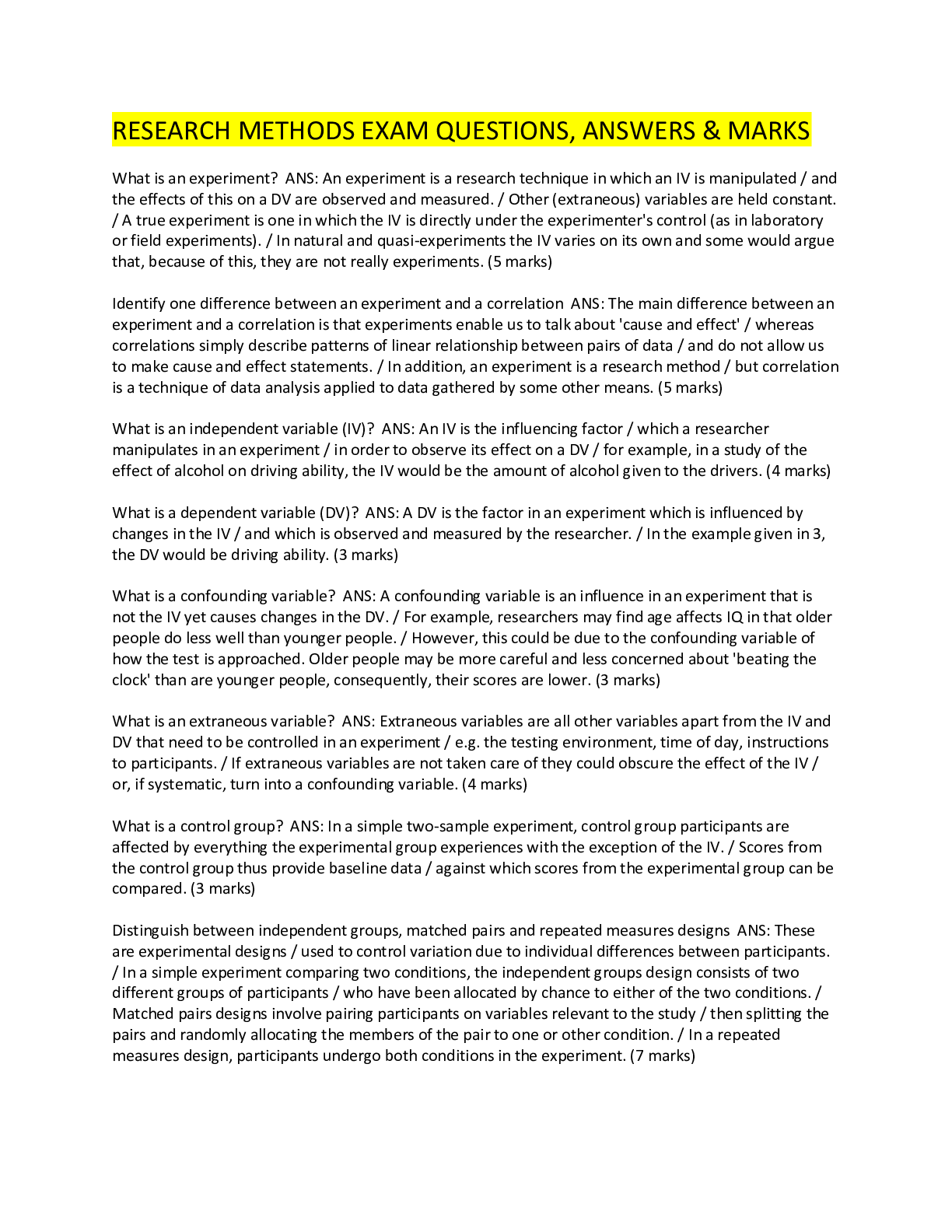
Reviews( 0 )
Document information
Connected school, study & course
About the document
Uploaded On
Jun 05, 2022
Number of pages
7
Written in
Additional information
This document has been written for:
Uploaded
Jun 05, 2022
Downloads
0
Views
213

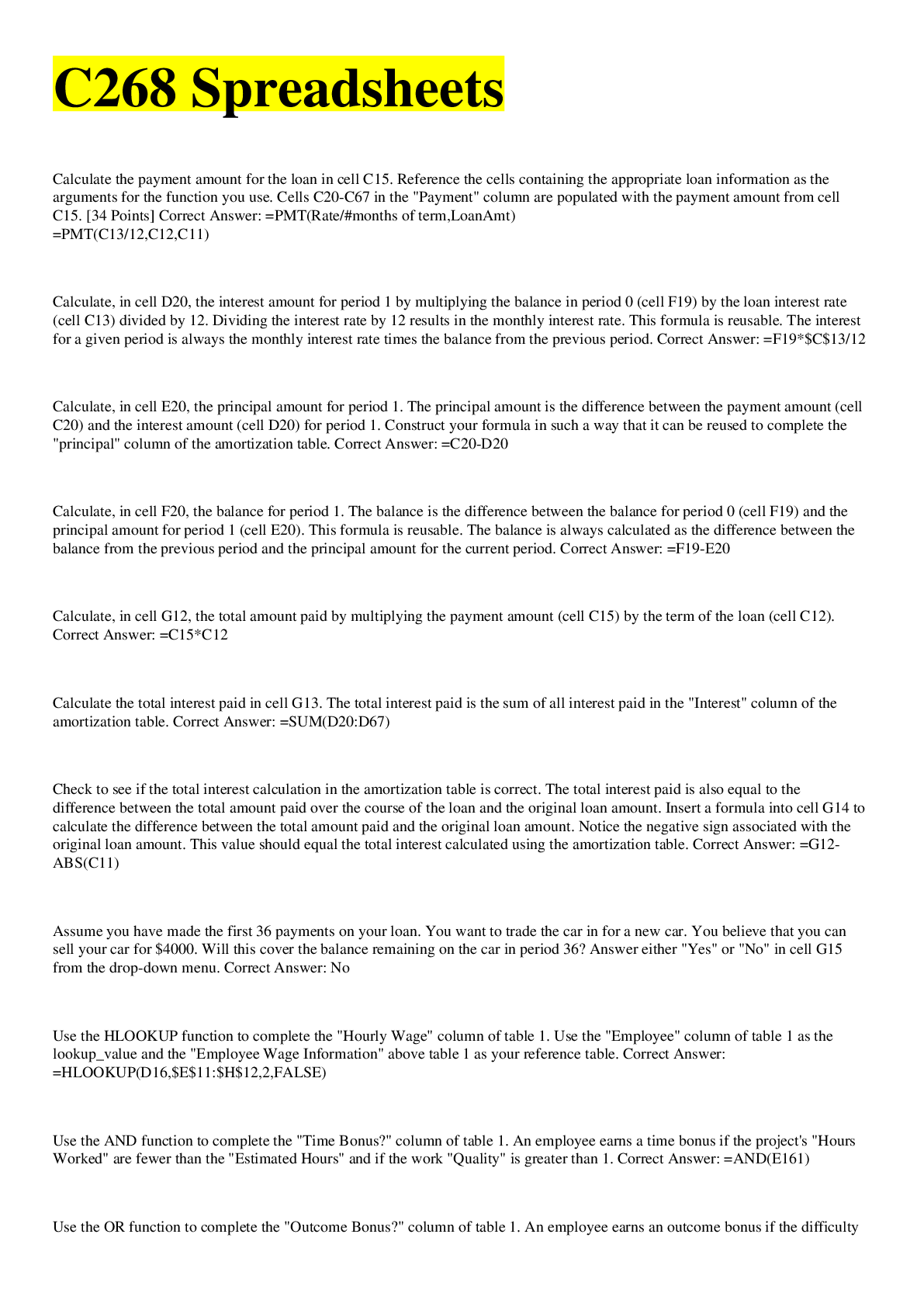
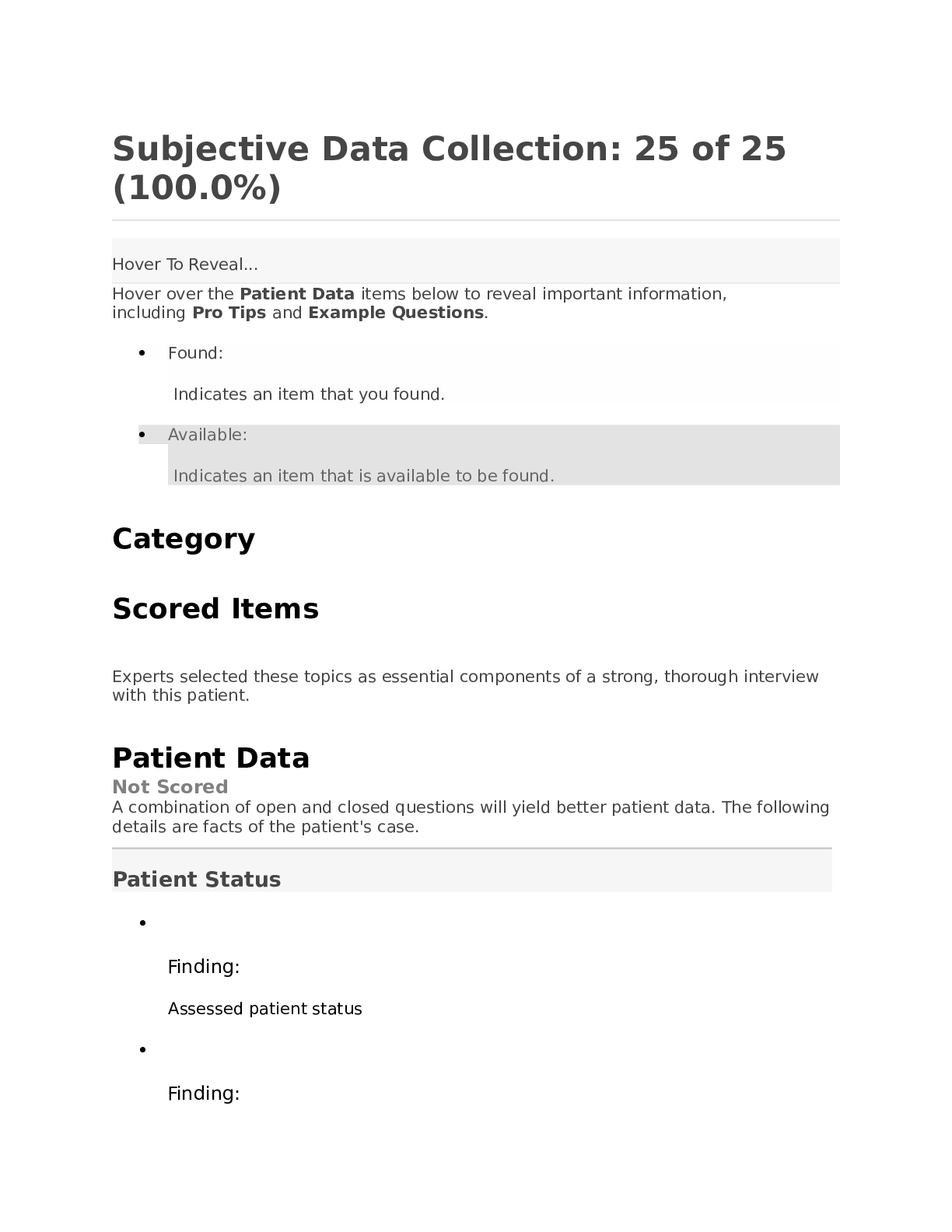
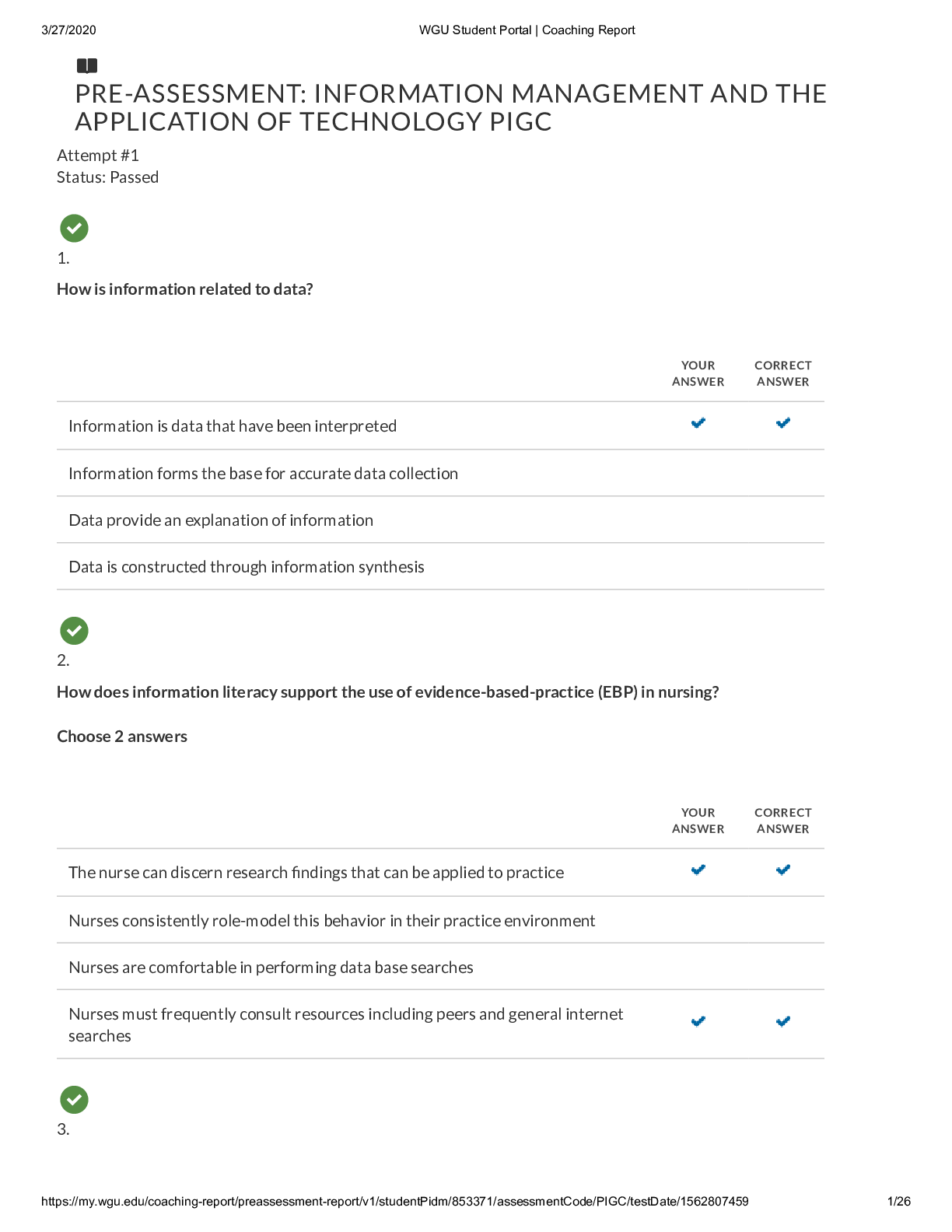
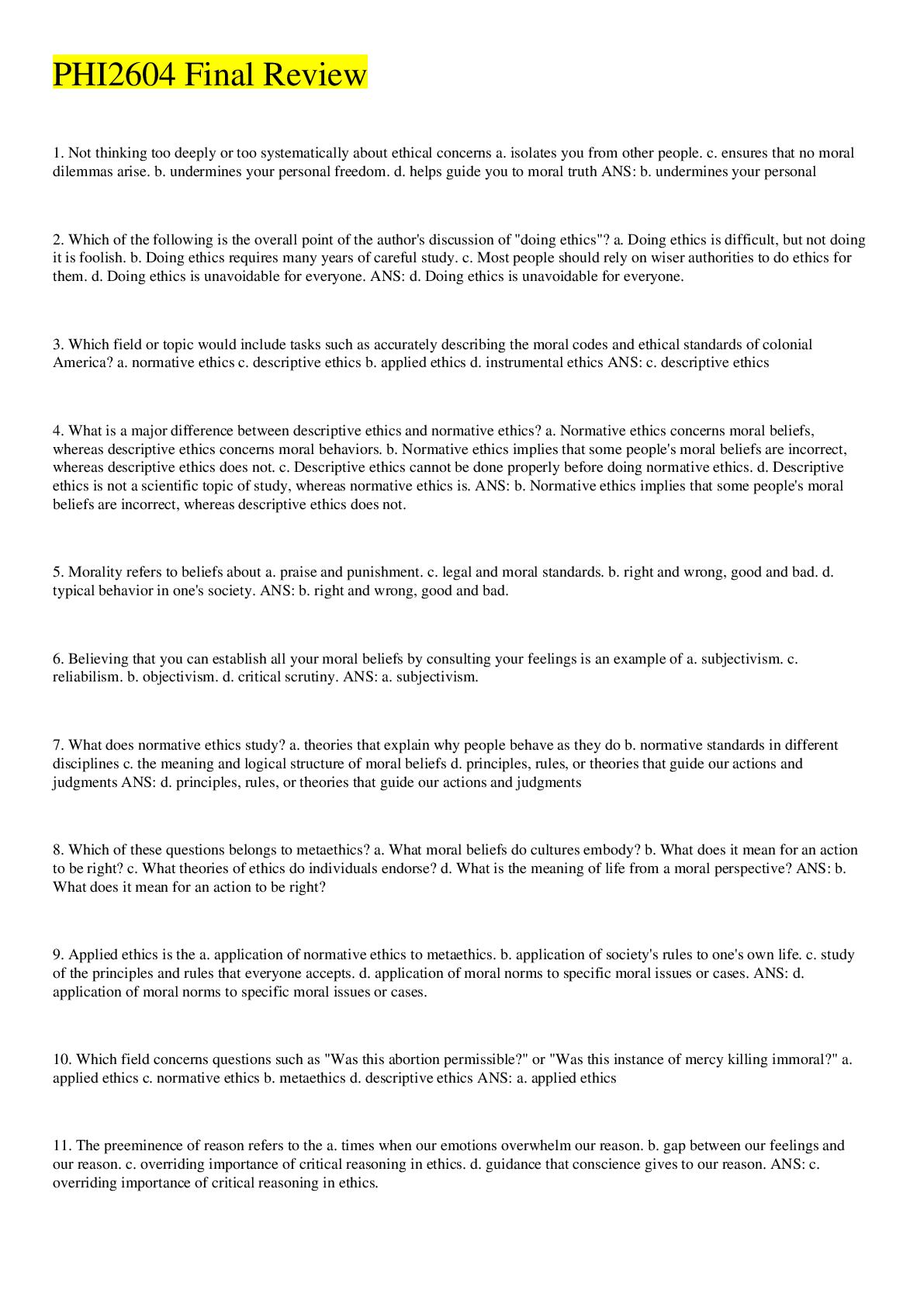
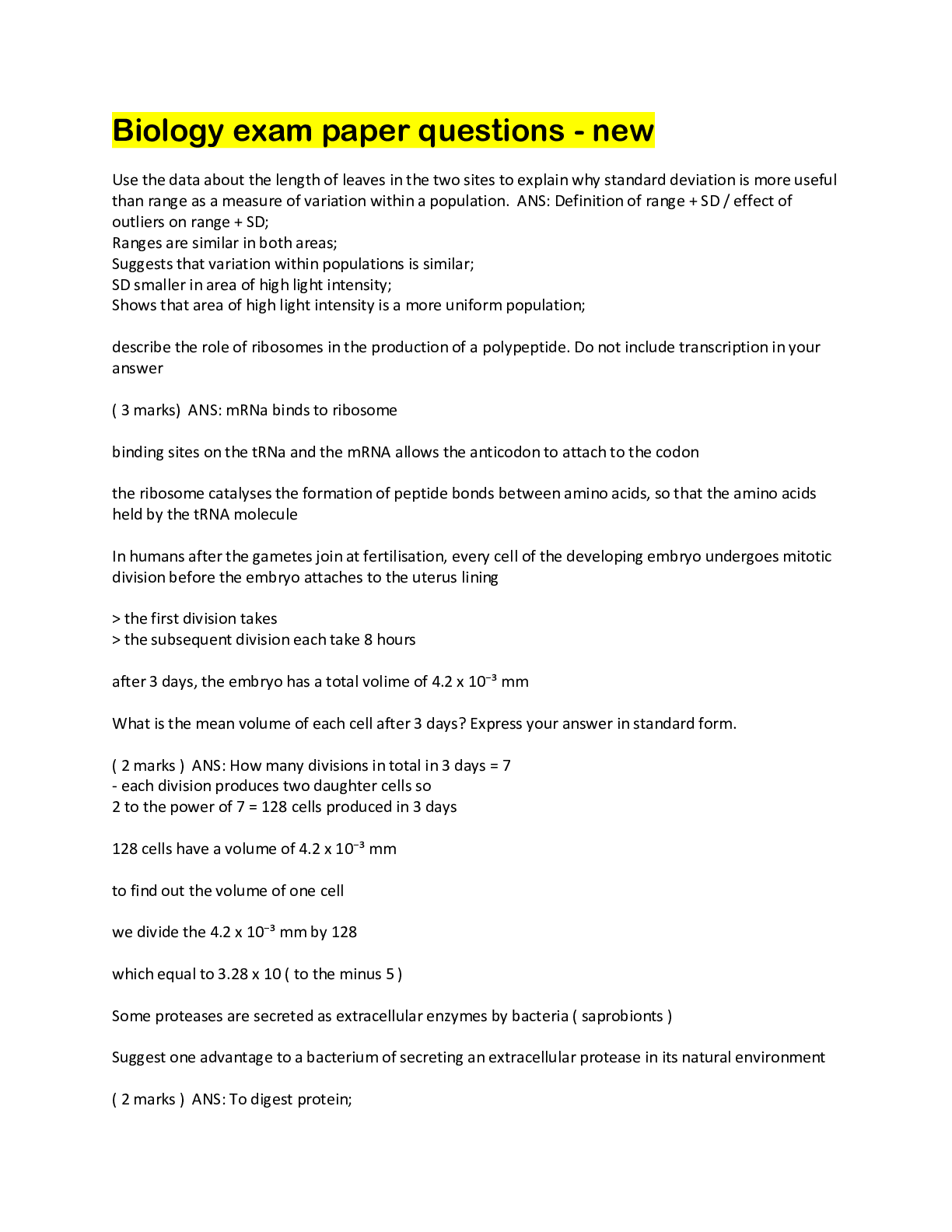
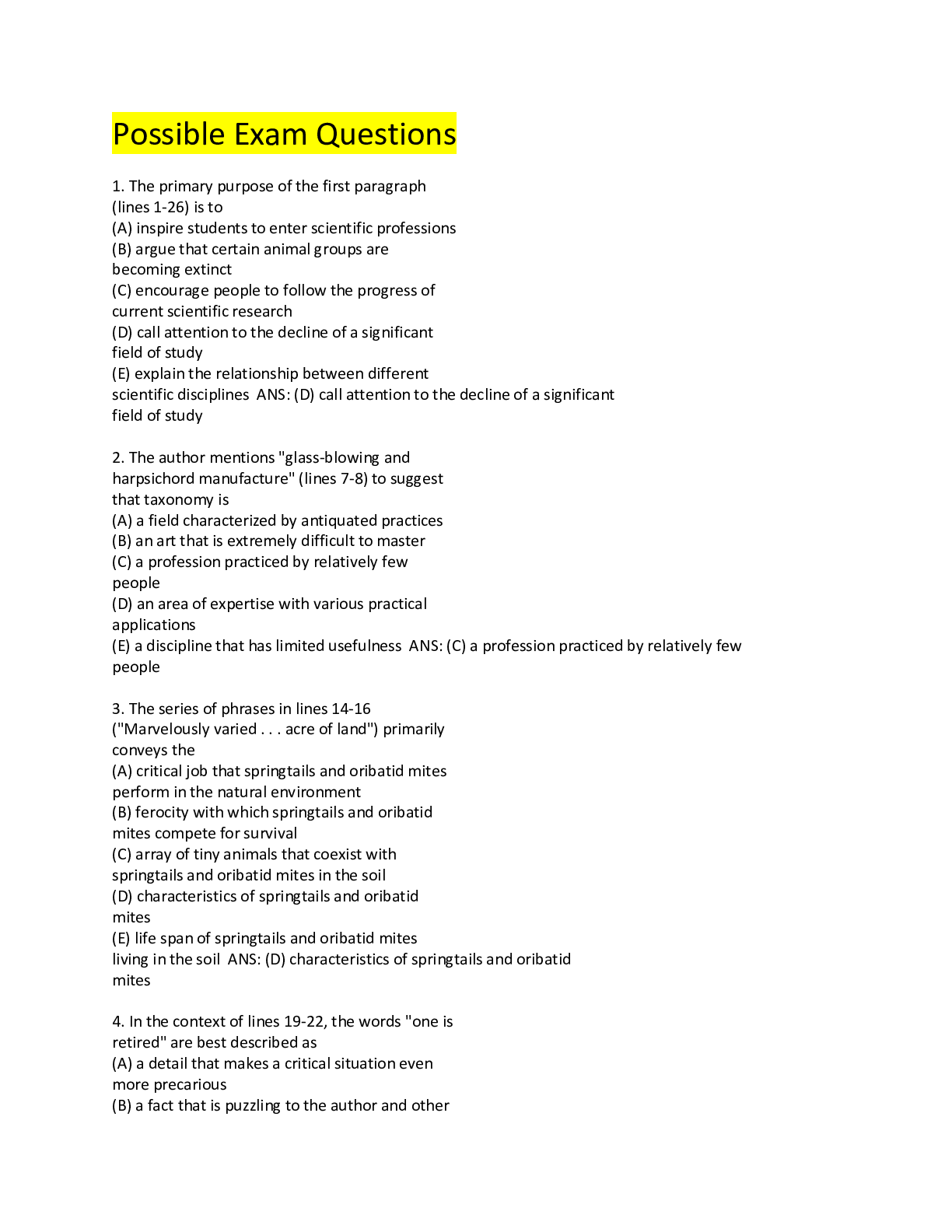
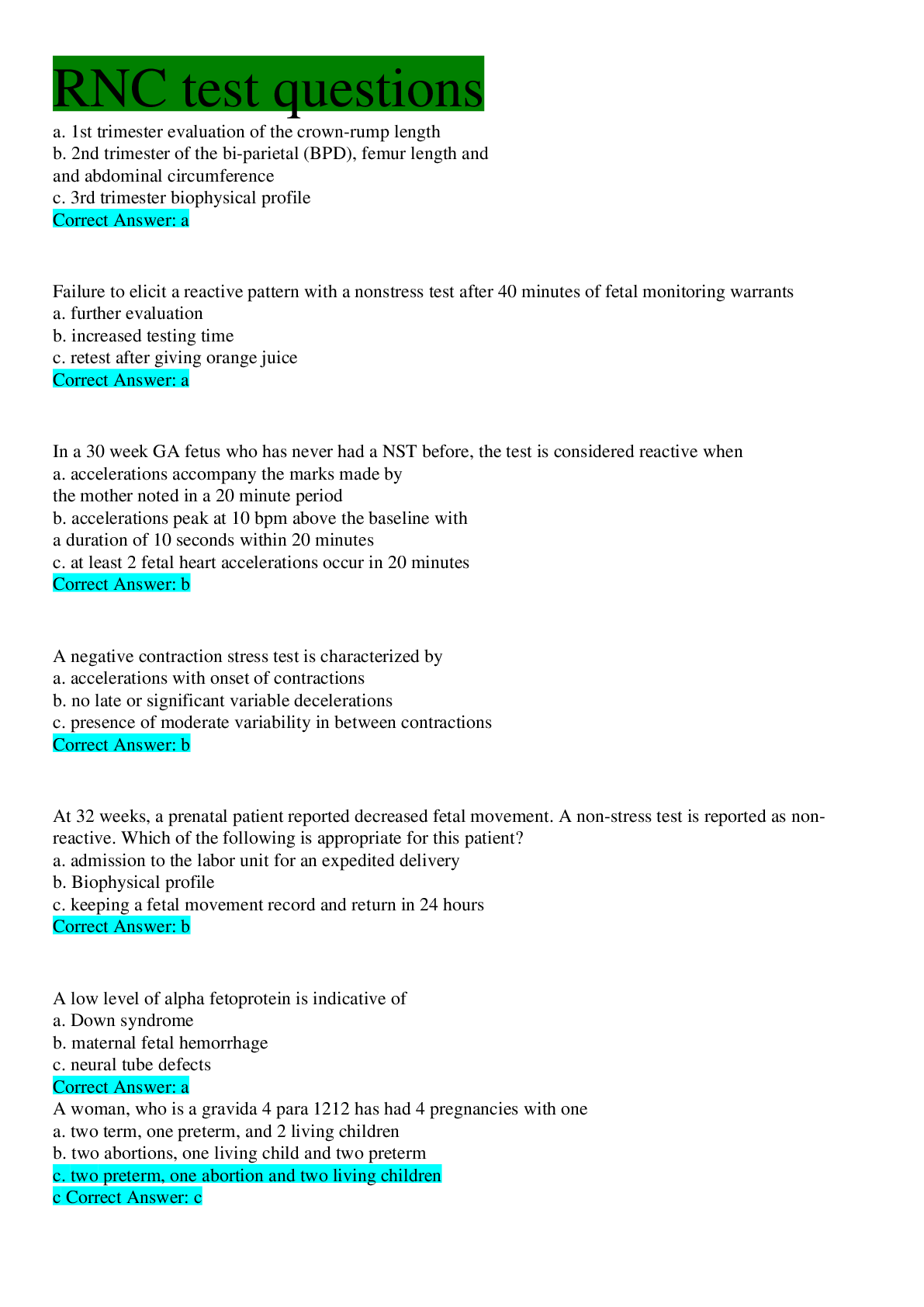
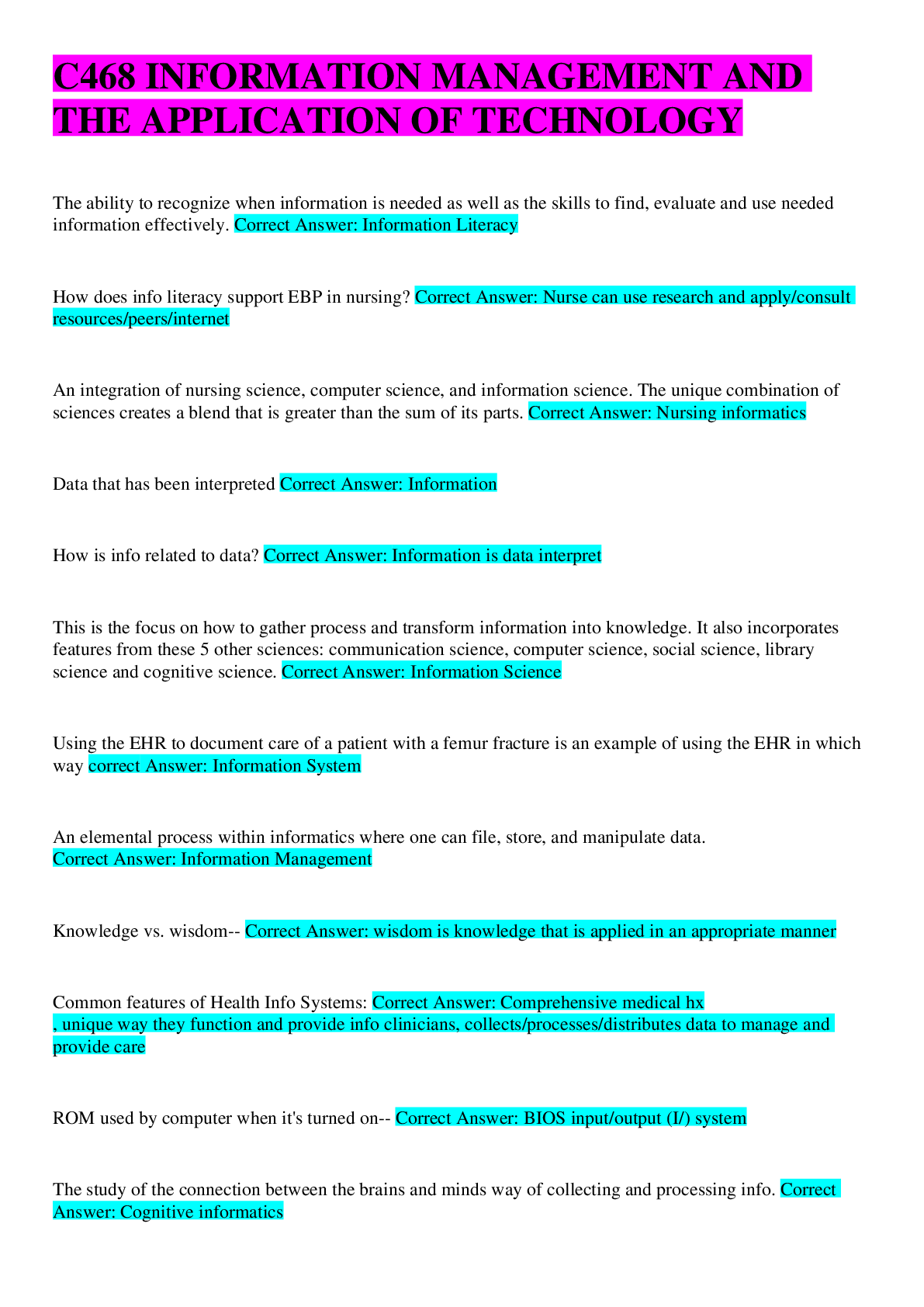
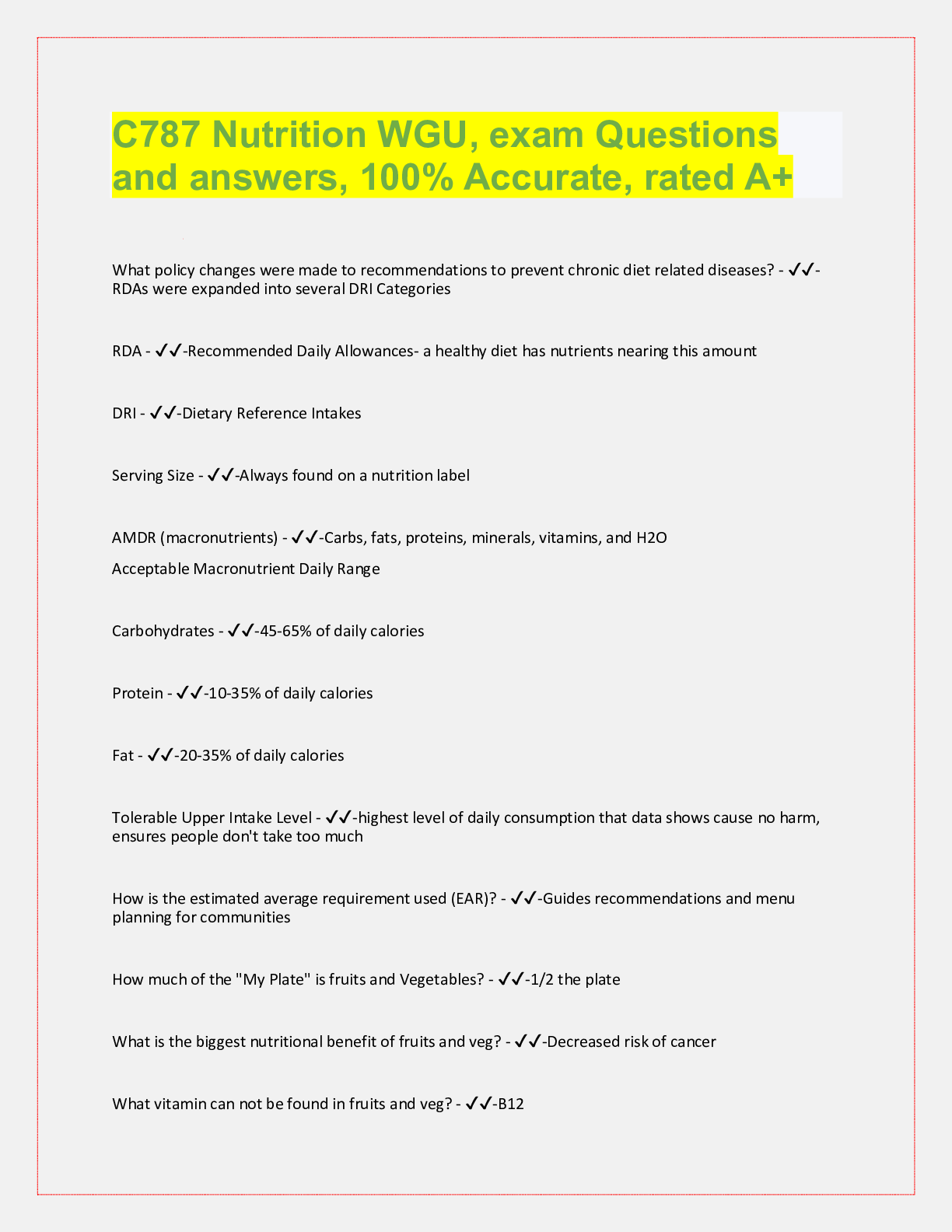
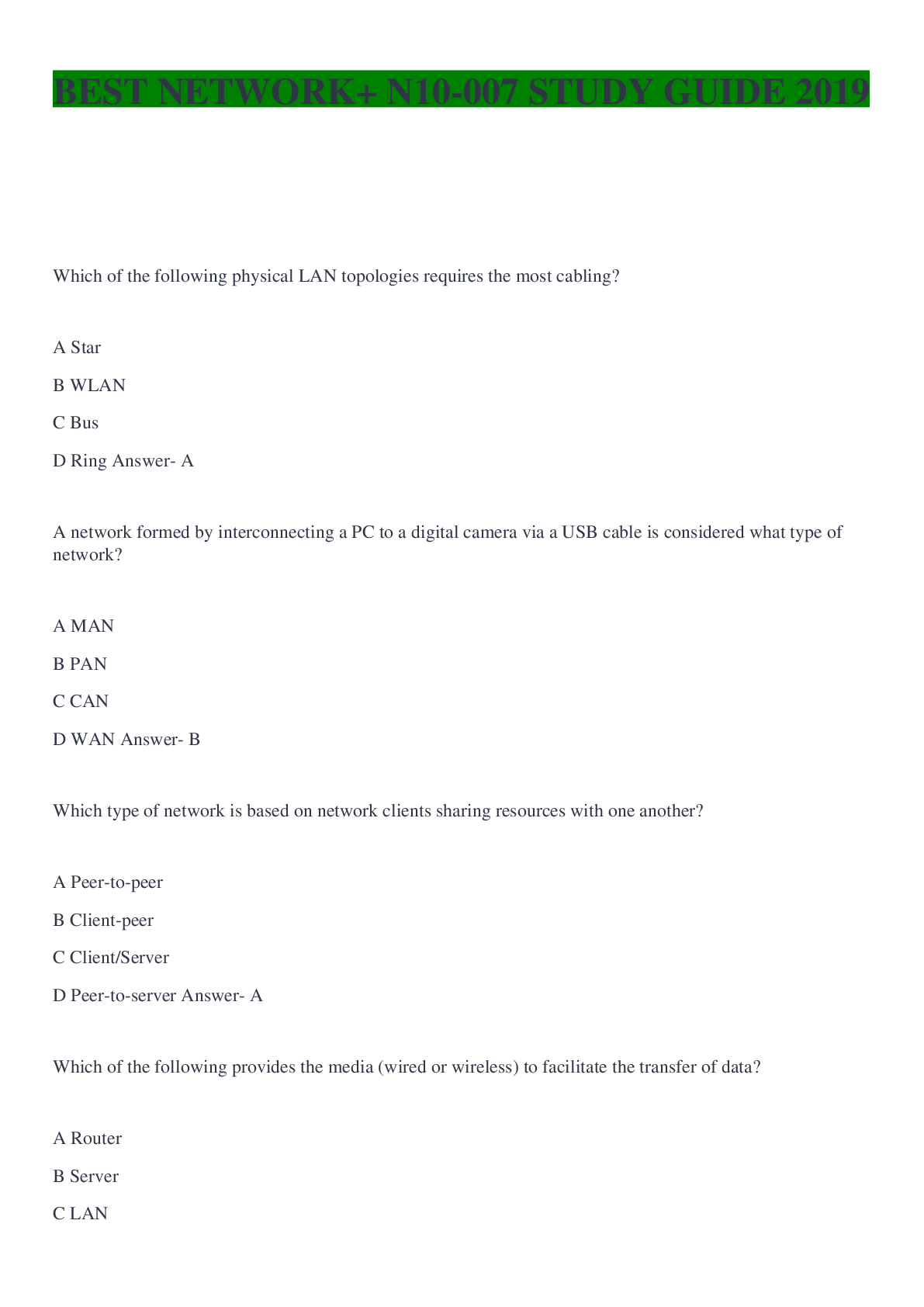


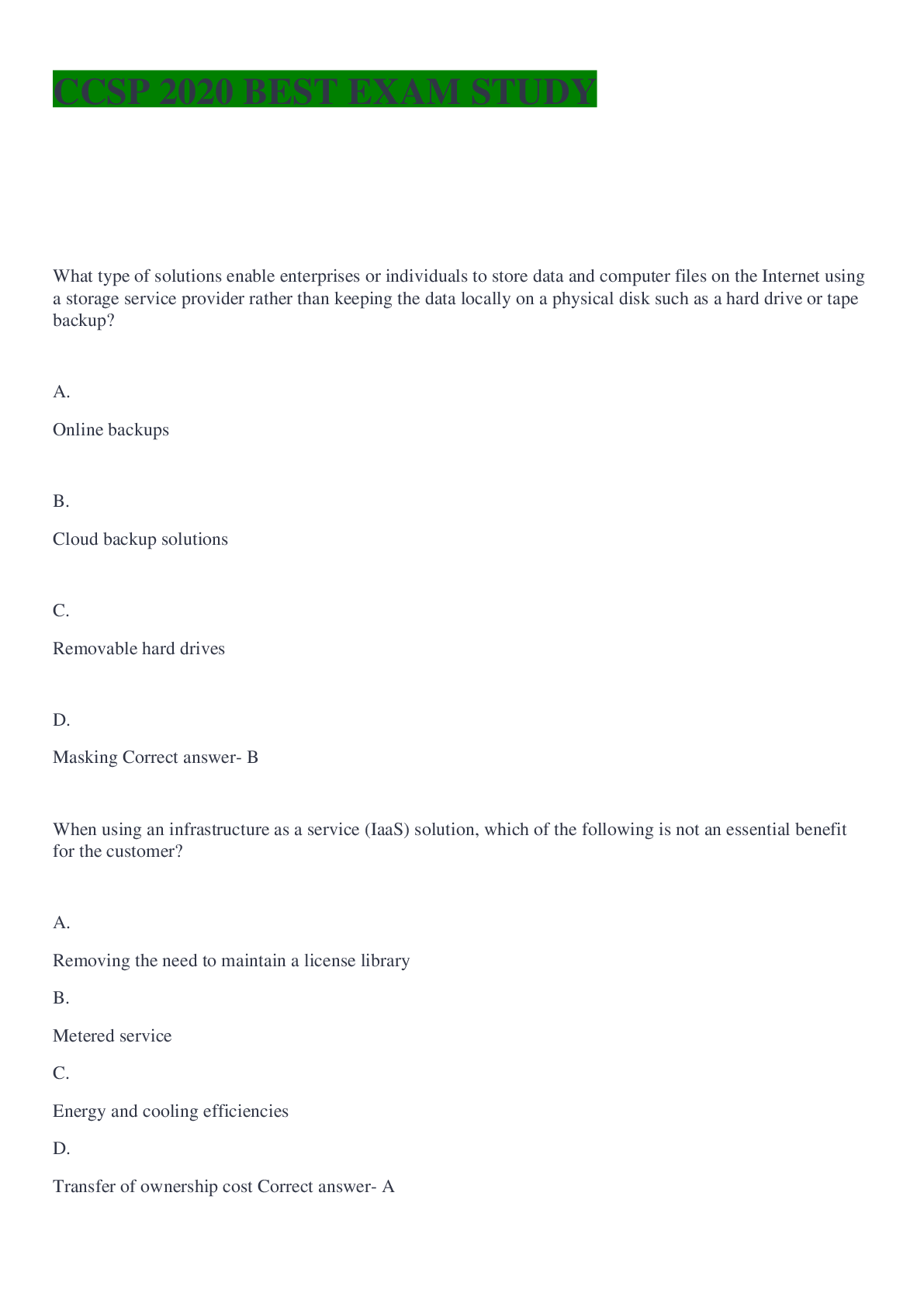
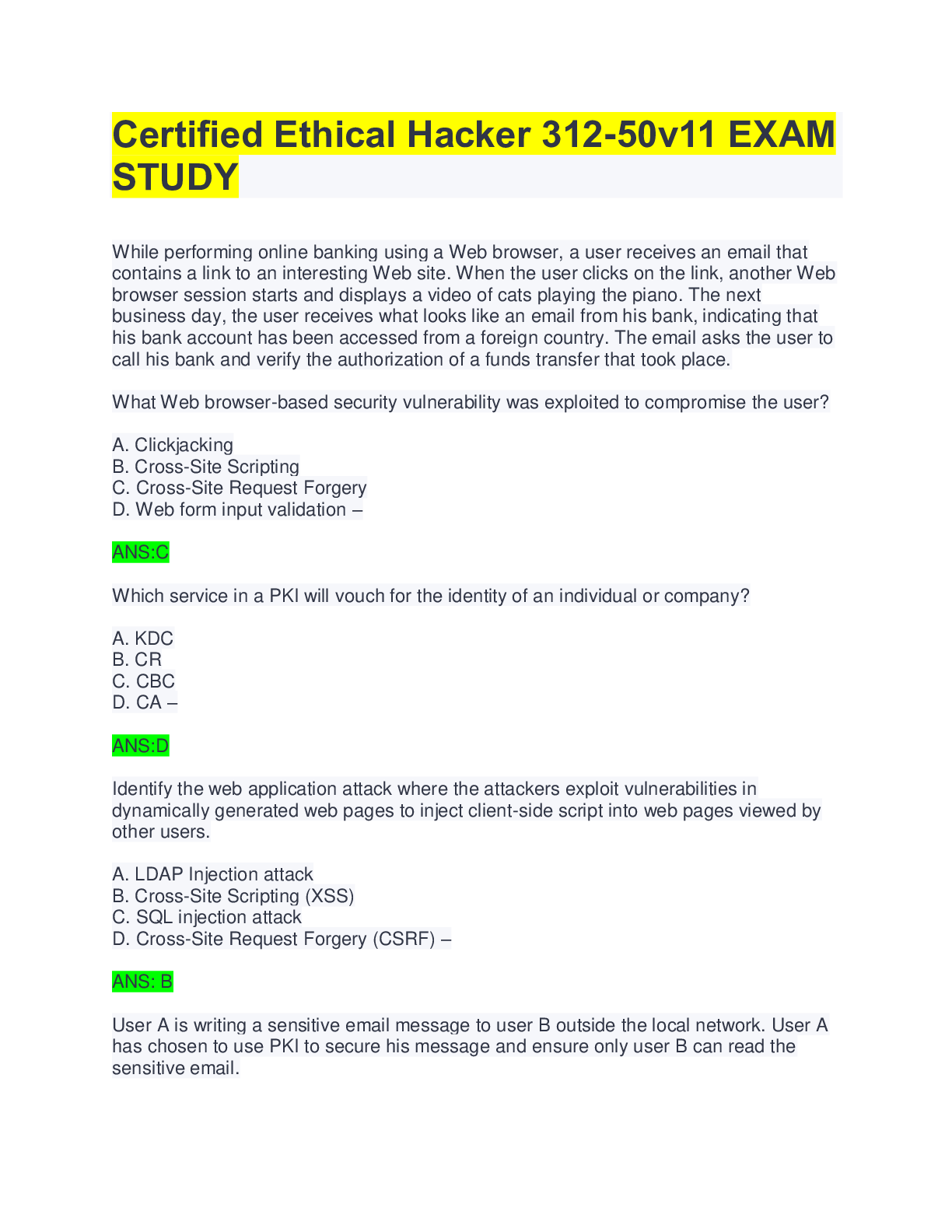

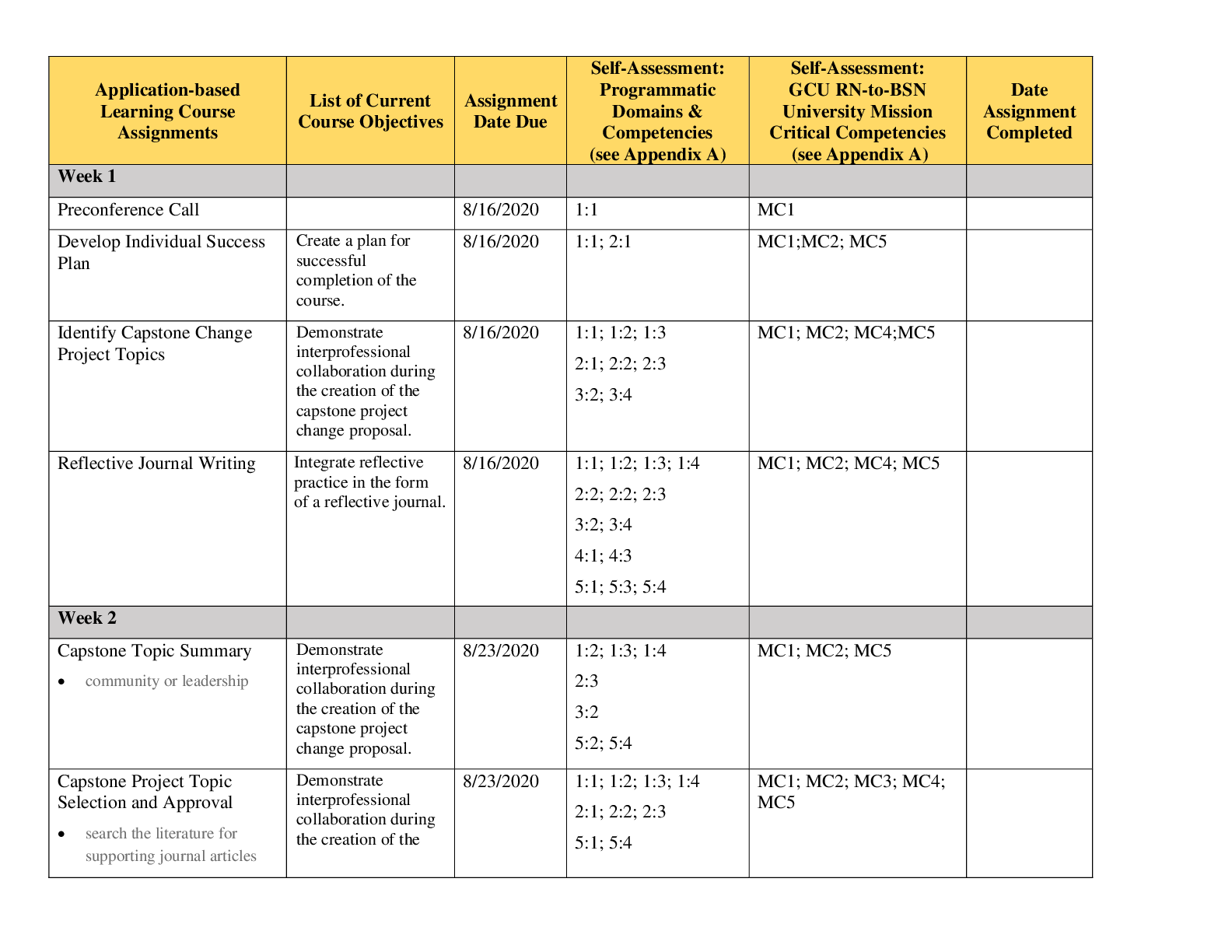







.png)





